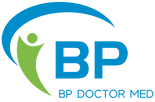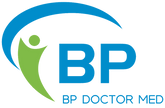Halting Heart Attack and Stroke – Get Medical Help Fast
www.bpdoctormed.com
Table of Contents
- Why Speed Matters in Medical Emergencies
- Symptoms to Watch For
- Know Your Risk Factors
- Monitoring with Smartwatches
- How to Reduce Your Risk
- Conclusion
Why Speed Matters in Medical Emergencies
A heart attack or stroke can happen suddenly—and the faster you act, the better your chances of survival. Getting medical help within the first hour can mean the difference between full recovery and permanent damage. Immediate treatment can save heart and brain cells, improving outcomes dramatically.
“Early treatment is key,” says Dr. Gina Wei from the NIH. “The sooner you dissolve or remove the clot, the better the recovery.”
Symptoms to Watch For
Recognizing symptoms early is vital. For heart attacks, common symptoms include:
- Chest pain or discomfort in the center or left side
- Pain in arms, back, neck, jaw, or stomach
- Shortness of breath
- Sudden sweating, nausea, dizziness
Stroke symptoms are often summarized by the acronym FAST:
- Face drooping
- Arm weakness
- Speech difficulty
- Time to call 911
Do not wait—call emergency services immediately. Every minute counts.
Know Your Risk Factors
Certain health conditions raise your risk of heart attack and stroke. Key risk factors include:
- High blood pressure (hypertension)
- High cholesterol levels
- Chronic inflammation
- Smoking
- Obesity and lack of physical activity
Many of these can be silently damaging your body. High blood pressure especially shows no symptoms but is one of the strongest predictors of stroke. Regular monitoring is essential to stay safe.
Monitoring with Smartwatches
Modern technology like smartwatches can now help you monitor blood pressure and alert you to irregularities. Devices like the BP Doctor Pro 17 provide real-time blood pressure tracking, heart rate monitoring, and early warnings of abnormal patterns.
These wearable health tools are especially useful for seniors or people with hypertension. With smart health monitoring, you can:
- Track blood pressure trends daily
- Get alerts for high or low readings
- Share data with your doctor for better care
Smartwatches are making it easier than ever to take charge of your health, right from your wrist.
How to Reduce Your Risk
Prevention plays a major role in stopping heart attacks and strokes. Here’s how you can lower your risk:
- Eat more fruits and vegetables
- Reduce red meat and processed foods
- Exercise regularly (even a daily walk helps)
- Quit smoking
- Manage stress and get quality sleep
Medications may also be needed. Statins can lower cholesterol, and drugs like low-dose colchicine may reduce inflammation. Blood pressure medications are essential for people with high readings, especially older adults.
As studies show, the lower your blood pressure, the lower your risk of stroke. That’s why monitoring with a smartwatch for blood pressure is becoming increasingly recommended by doctors.
Conclusion
Heart attacks and strokes are serious—but often preventable. Act fast when symptoms strike, and monitor your health proactively. Tools like the BP Doctor Pro 17 smartwatch can help you stay one step ahead of these life-threatening conditions. Stay informed, stay ready, and take your heart health seriously—every minute matters.








